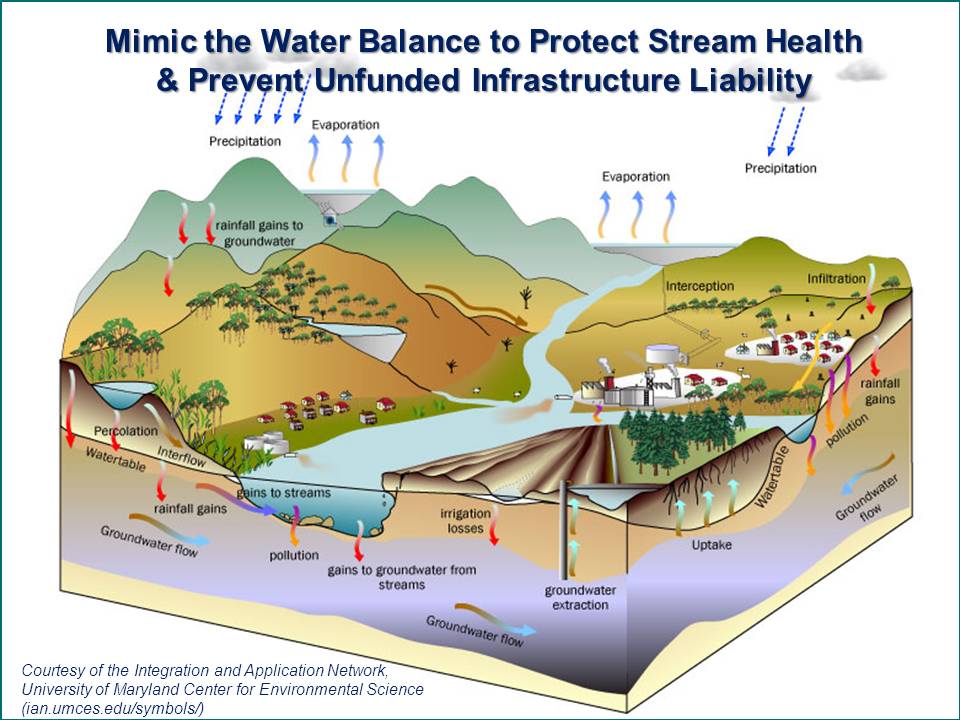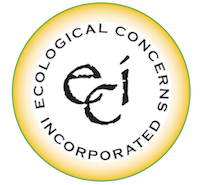The EPA’s 8 Tools of Watershed Protection
As the El Nino rains fall this winter, we’re all reminded about watershed protection and the EPA has amazing online resources for developers and city planners.
The eight tools roughly correspond to the stages of the development cycle including initial land use planning, site design and construction, and ultimate occupancy and long-term maintenance. As a result, local watershed managers will generally need to apply some form of all eight tools in every watershed to provide comprehensive protection. A local watershed plan is often used to define how and where the eight tools are specifically applied to meet their unique water resource objectives.
1) Land Use Planning, is perhaps the most important because it involves making decisions about the amount and location of development (and new impervious cover) that occurs in a watershed. Land use planning techniques, such as watershed planning, watershed-based zoning, overlay zoning, and urban growth boundaries, are used to redirect development, preserve sensitive areas, or reduce impervious cover in a given portion of the watershed.
2) Land Conservation, involves choosing the most critical areas in a watershed to conserve in order to sustain the integrity of aquatic and terrestrial ecosystems. Critical habitats for endangered species, aquatic corridors, hydrologic reserve areas, contiguous forests and wetlands may be important conservation areas, and can be protected via land acquisition and conservation easements, to provide permanent protection from development.
- Aquatic Buffers are the third tool, and involves making choices on how to maintain the integrity of streams, shorelines, and wetlands, and protect them from encroachment. Buffers are recommended along aquatic corridors to physically protect and separate water resources from disturbance and pollution from adjacent land.
4) Better Site Design, which seeks to design development sites to create less impervious cover, conserve more natural areas, and use pervious areas to more effectively treat storm water runoff. Better Site Design affords greater protection to water resources by reducing both storm water runoff volume and pollutant loads to downstream waters.
- Erosion and Sediment Control deals with the clearing and grading stage in the development cycle, when storm water runoff can deliver high sediment loads to downstream waters. This tool reduces the impact of sediment by requiring specific temporary practices to be installed at construction sites that reduce erosion and prevent sediment from entering downstream waters.
6) Storm Water Management, identifies how, when, and where to provide storm water management within a watershed, and which combination of storm water treatment practices will best meet watershed objectives. Storm water treatment practices compensate for the hydrological changes caused by new and existing development by reducing runoff volume and improving water quality.
7) Non-Storm Water Discharges, involves making decisions on how to control discharges from waste water disposal systems, illicit connections to storm water systems, pollution from household and industrial products, and other point sources of water pollution.
8) Watershed Stewardship, involves creating programs to promote private and public stewardship to sustain watershed quality. The goal of watershed stewardship is to increase public understanding and awareness about watersheds, promote better stewardship on private lands, and develop funding to sustain watershed management efforts. Each of the eight tools should be specifically applied to protect unique wetland resources in watersheds that may be vulnerable to impacts from future development.

Source: https://cfpub.epa.gov/watertrain/moduleFrame.cfm?parent_object_id=1278

